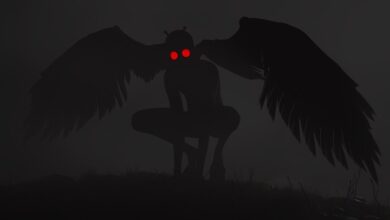Newly Released Photos of Loch Ness Monster Represent “Most Compelling” Evidence Seen to Date, Researcher Says

The video is being lauded for showing the creature’s apparent movement, made possible because the still images “were taken on a high-resolution camera with great meta-data and depth of field.”
“Whether you’re a sceptic or a believer, this mysterious video will give you goosebumps and have you debating late into the night over what was captured by Chie in the loch that day. There will no doubt be those who will assume this is a video made using AI, or somehow been tampered with, but we at the Cryptid Factor can attest to them being entirely authentic,” Schrieber said. “They have not been photoshopped or falsified in any way. […] Hopefully this video will serve as a reminder that there are still mysteries still out there to be solved, and it will ignite the world of amateur sleuths into analyzing this footage and helping us get to the bottom of what is in it.”
As mentioned by Feltham, otters are a popular skeptical explanation for sightings of a seemingly mysterious creature in the loch, especially given they are strong swimmers and can quickly disappear under water for long periods of time while performing dives that are dozens of feet deep. Another skeptical explanation presented for Chie’s photos is that they show a diver, although so far, no one has come forward to take credit.
Still, plenty of cryptozoological explanations also remain popular.
Some believe that sightings of strange moving objects in Loch Ness are indicative of a surviving population of plesiosaurs, although others argue that more recent scientific study makes that possibility unlikely.
Plesiosaurs, aquatic reptiles who first appeared in the fossil record around 200 million years ago and were thought to have died off 66 million years ago (the same time as the dinosaurs), are a popular explanation for the monster said to inhabit Scotland’s Loch Ness; an explanation first introduced in the 1930s and later popularized by naturalist Sir Peter Scott and zoologist Denys Tucker.
Supporters of the hypothesis point to the long necks of plesiosaurs and postulate that this explains why witnesses sometimes describe seeing a neck-like appendage with a small head attached sticking up out of the water.
But despite recent findings that suggest plesiosaurs were adapted to tolerate freshwater and might have even spent their entire lives in it, a research project published to the Journal of Vertebrate Paleontology by scientist Paul Scofield showed that plesiosaurs were actually very unlikely to ever lift their heads above the water.
It is much more likely, according to Scofield, that plesiosaurs used their long necks to dredge the seafloor.
“They have these enormous teeth arranged in rows like a grappling iron,” he explained. “It has been hypothesized that they floated on the surface and dredged the seafloor blowing the dirt out through their teeth and leaving just the clams. Thus, their feeding method dictates the neck length—it’s just like the giraffe but in reverse.”
Some believers might argue that this only explains why any plesiosaurs inhabiting Loch Ness aren’t seen with their heads above water more often, but Scofield dismisses any belief in the monster entirely.
“I totally reject the idea that Nessie exists and that it is an elasmosaurus,” he said. “Loch Ness monster records are a mixture of fakes and mistakes.”
This wasn’t the first time within the past several years that the plesiosaur hypothesis had taken a beating in the court of public opinion.
A 2019 study conducted by Neil Gemmell, a New Zealand scientist and professor at the University of Otago, caused quite a stir when it failed to turn up any evidence of plesiosaurs in Loch Ness.
Gemmell’s study involved gathering water samples from multiple locations and at different depths of the loch to scan for bits of animal DNA, and then working to identify it. The samples were sent to labs in New Zealand, Australia, Denmark, and France which used large sequence databases to compare the DNA found in Loch Ness with the majority of known living things. This was done to help distinguish and identify any potentially unknown genetic material.
The results revealed no evidence of any large animals such as sturgeon, catfish, sharks, or surviving prehistoric plesiosaurs, but they did show an abundance of eel DNA.
However, it should be noted that the study was not comprehensive and does not represent a definitive catalog of life in Loch Ness.
Despite this, many now point to giant eels as a possible explanation for the monster, although, as of yet, no proof of their existence in the loch has been found.
But cryptozoologist Ken Gerhard has another hypothesis for the Loch Ness Monster.
“Based on thousands of eyewitness descriptions, I’m convinced that Nessie is just one of many such unknown creatures around the globe—Norwegian sea serpents, Champ and Ogopogo here in North America, lake monsters in Scandinavia, Russia, Japan and Argentina, among others—and that these animals represent the very same species, most likely descended from an ancient group of serpentine whales,” he told the Ross-shire Journal in 2021.
Although the vast majority of whales are found in saltwater, some whales can occasionally be found in freshwater rivers and lakes looking for food.
Supporters of Gerhard’s hypothesis might argue that the relative scarcity of credible evidence for a “monster” in the loch might be because they don’t live there full-time, but rather, only travel there in search of food.
And yet, there is currently no proof for the existence of whales in Loch Ness, so the sightings remain unexplained.




